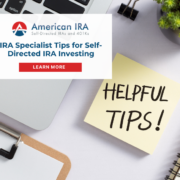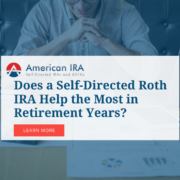Self-Directed Retirement Plans for Small Business Owners – An Overview
 Much has been written about the Self-Directed IRA. The concept is beginning to catch on more and more among entrepreneurially-minded and independent investors who aren’t satisfied with the modest, watered-down expected returns usually offered by run-of-the-mill investment companies, mutual funds, annuities and the like.
Much has been written about the Self-Directed IRA. The concept is beginning to catch on more and more among entrepreneurially-minded and independent investors who aren’t satisfied with the modest, watered-down expected returns usually offered by run-of-the-mill investment companies, mutual funds, annuities and the like.
We are big fans of the Self-Directed IRA, of course – but the Self-Directed IRA has one major drawback compared to taxable investments: A $5,500 ceiling on annual contributions!
Yes, those who are age 50 or older can make an additional $1,000 per year in catch-up contributions. But that’s still a very modest sum compared to a lot of minimum investment figures and the real-world liquidity needs of a lot of assets held within a Self-Directed IRA.
Even if you rolled over a larger sum from another retirement account into a Self-Directed IRA, you are still constrained by the relatively low contribution limit on IRAs.
Fortunately, for many people, there are other options.
If you own a small business, you may be able to open up a self-directed small business retirement plan. Specifically, you can choose to establish one of these popular self-directed retirement plans:
- Self-Directed Solo 401(k)
- Self-Directed Simplified Employee Pension Plan (SEP)
- Self-Directed SIMPLE plan
Each of these options offers most of the advantages of Self-Directed IRAs – but with significantly larger maximum annual contributions.
Self-Directed Solo 401(k)s
Solo 401(k) plans allow you, as an employee of your own entity, to set aside as much as $17,500 per year. For those over 50, you can contribute another $5,500 per year above that for a total of $23,000. The employee portion may be contributed as a Roth. That by itself is a big boost over the contribution limits available with Self-Directed IRAs.
- The total combined contribution including the employee and employer may be as high as $57,500, depending on the circumstances. However, the IRS does limit the employer contribution to a maximum of 25 percent of employer compensation.
- The Solo 401(k) can also be structured to allow for loans from within the plan. The maximum loan is $50,000 or 50% of the account balance, whichever is less.
- The Solo 401(k) plan is designed for sole owners, corporations, LLCs, and partnerships.
- One advantage to Solo 401(k) plans is they are not subject to unrelated debt taxable income (UDTI) under some circumstances unlike other retirement plans. This is of interest to those who plan to employ leverage within their self-directed 401(k)s, such as to buy real estate.
Self-Directed SEP IRA
- This popular option allows for contributions of up to 25 percent of compensation, to a limit of $52,000 as of 2014.
- Self-Directed SEPs can work well for sole proprietors and the self-employed/independent contractor. They can also work for partnerships and S-corporations, as well.
- If you have employees, the SEP allows you to include them in the plan more efficiently than the Solo 401(k) plan. Administrative costs are also low compared to 401(k) plans and other plans designed for larger businesses.
Self-Directed SIMPLE
- This plan is designed for small businesses with fewer than 100 employees who do not want the administrative burden of establishing a full 401(k) plan.
- Employees can contribute up to $12,000 per year, and those over age 50 can contribute an additional $2,500 in “catch-up” contributions as of 2014.
- Corporations/employers can also contribute to employees’ plans. But they are not required to, and can change the contribution each year, based on cash flow and any other factor they like.
- This option may be appropriate for those business owners who have employees and who want to be able to offer them a valuable incentive while still retaining flexibility to contribute to their own accounts – and manage them on a self-directed basis.
Need more information? Give us a call! We are at 866-7500-IRA (472). We look forward to serving you.
Image by: presentermedia.com





